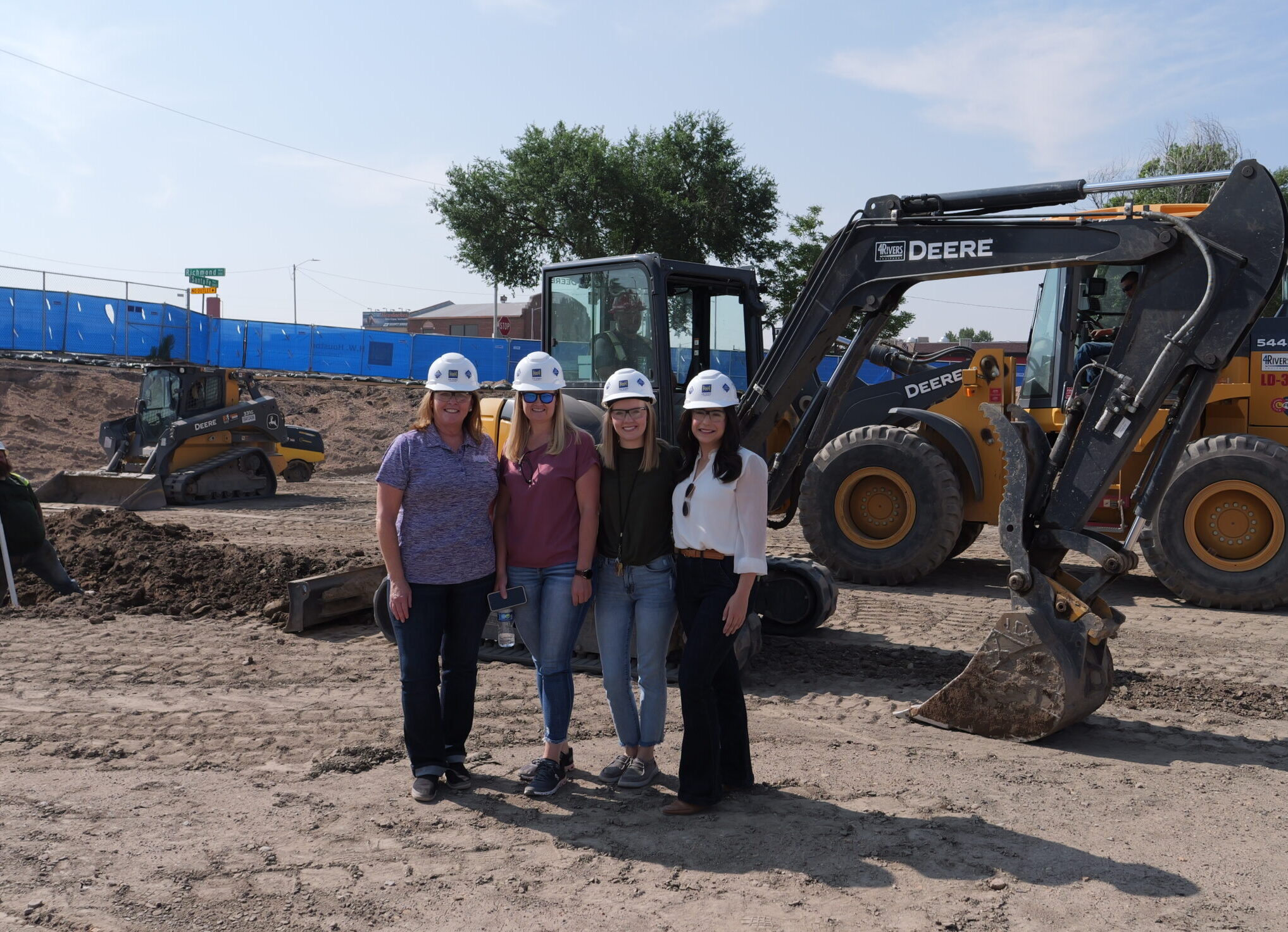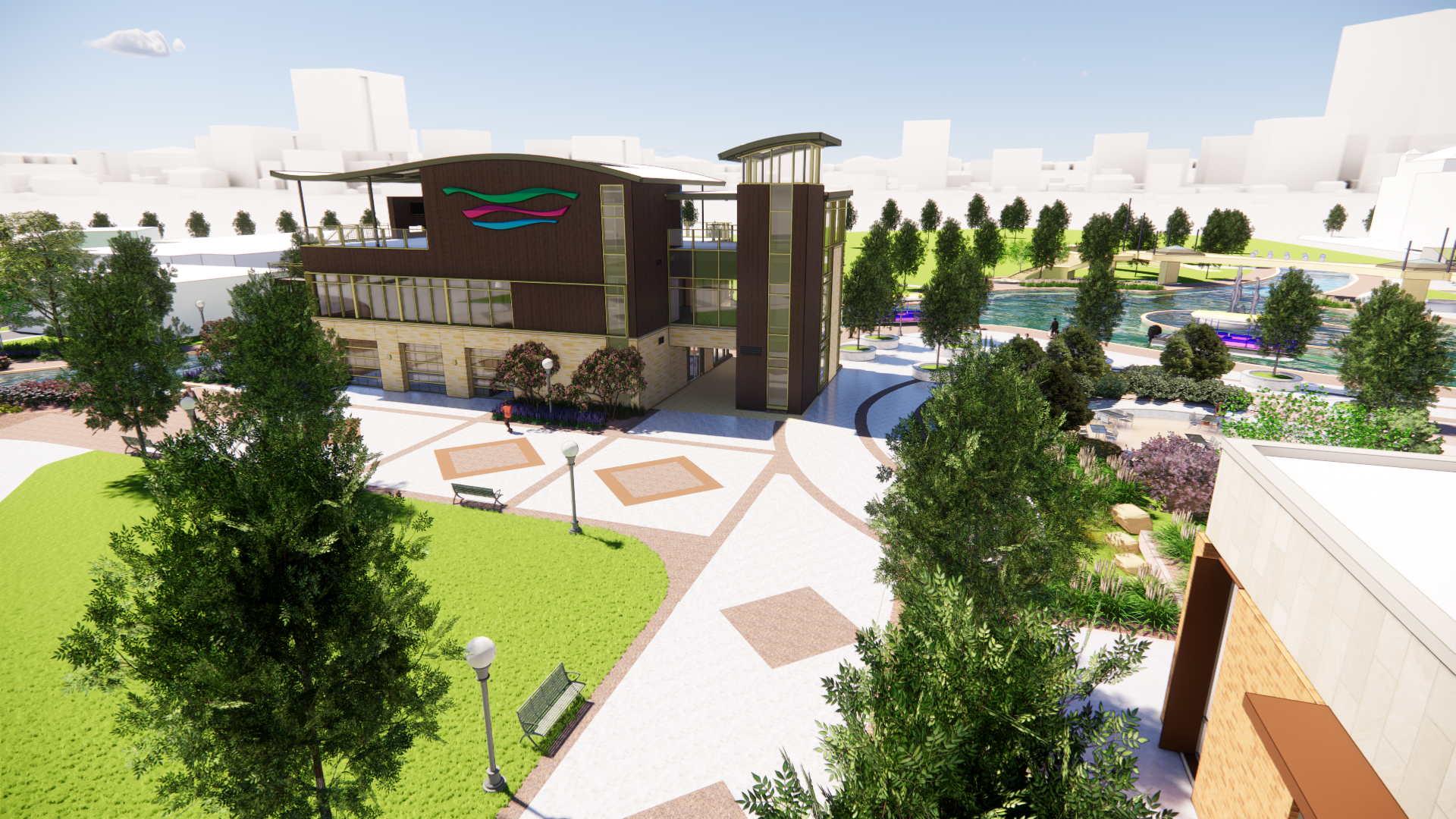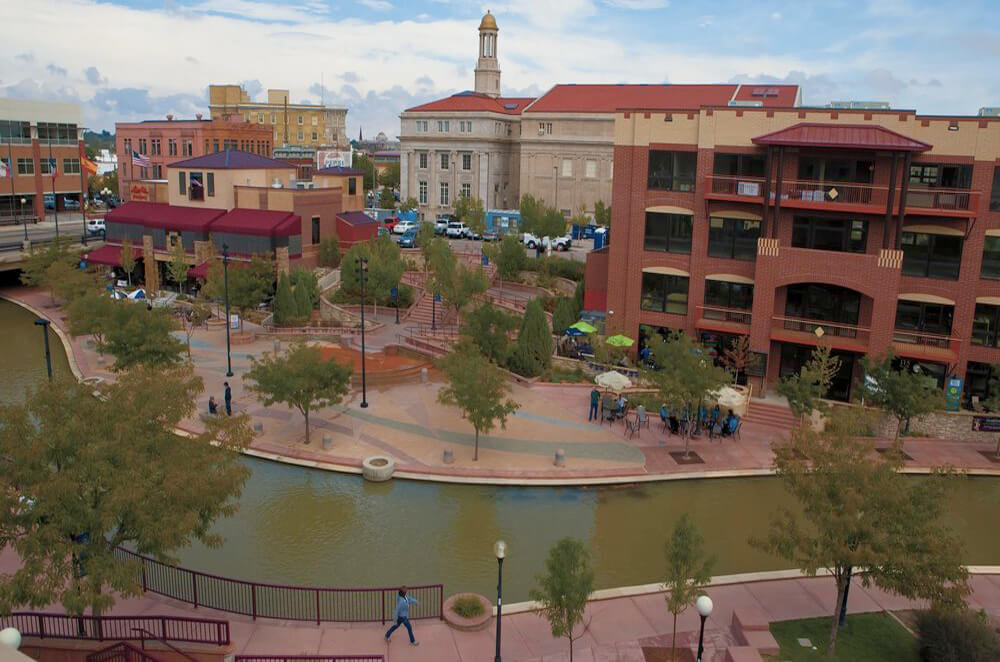Nestled in the heart of Downtown Pueblo, the Pueblo Riverwalk is more than just a scenic landmark — it symbolizes a community’s resilience, unity, and vision for a brighter future.
The Riverwalk’s story began over a century ago. During the Great Pueblo Flood of 1921, the Arkansas River overflowed, causing catastrophic damage to downtown Pueblo and taking the lives of 200 people. In the aftermath, the river was rerouted, and a levee was built to protect the city.
Nearly 60 years later, Pueblo was facing economic challenges. Civic leaders then came up with the bold idea to revitalize downtown Pueblo and bring back the river, making it an integral part of Downtown Pueblo.

“There was always a master plan,” said Lynn Clark, executive director of the Historic Arkansas Riverwalk of Pueblo (HARP) Authority and Foundation. “When they first sketched out what the Riverwalk could be, they thought big.”
The vision for revitalizing Pueblo’s riverfront gained momentum in the mid-1990s, as a grassroots movement emerged to transform the once-neglected Arkansas River into a vibrant gathering space.
Community members gained inspiration from the Riverwalk in San Antonio, which is well-known for its culture, history, and fun to both Texas locals and tourists alike. To actualize the vision of building a riverwalk attraction in Pueblo, the community voted in support of a tax that raised $11.8 million to fund the first phase. The Pueblo Riverwalk opened in 2000, setting the stage for a transformative journey with subsequent expansion projects.
Today the Pueblo Riverwalk spans 32 acres of beautifully landscaped areas, public art, and vibrant businesses. It is managed by the HARP Authority and funded by the HARP Foundation. The HARP Authority oversees daily operations, while the foundation leads fundraising efforts to enhance this vital community space. From historical boat tours to lively festivals, the Riverwalk has become a cornerstone of Pueblo’s tourism and community life.
Committed to expanding upon the original vision of the Riverwalk, the HARP 1A Expansion Project, which broke ground in 2024 and is set for completion in 2025, will introduce a new boathouse and extend the river channel. This development aims to create year-round spaces for recreation and community gatherings, further enriching the Riverwalk’s role in Pueblo.
At the heart of the expansion is the new boathouse, which will house the boats that serve as the vessels for historic tours down the Arkansas River.
“The boats are really an important part of the Riverwalk story,” said Dani Vigil, communications and development coordinator for the HARP Authority. “Every ride gives a 30-minute historical tour, talking about the 1921 flood and how the Riverwalk came to be. It shows Pueblo’s resilience and the beauty that came out of tragedy.”

The new boathouse will do more than serve as a storage facility for boats. The multi-purpose facility will enhance the visitors experience and engage the community. The first floor will feature a welcome center with ticketing, restrooms, and concessions, while the second floor will house HARP’s administrative offices and a conference room overlooking the river. Additionally, the rooftop will serve as a venue for events such as weddings, fundraisers, and educational programs.
“It’s a place to showcase what we have to offer, with the best views of the Riverwalk and Downtown Pueblo,” Vigil added.
Members of the HARP Authority, HARP Foundation, and Pueblo community are excited about the impact this expansion will have on the city and surrounding rural communities. Pueblo’s Riverwalk attracts visitors from towns like La Junta, Trinidad, and Walsenburg, whose residents often travel to Pueblo for medical services, shopping, and recreation. The Riverwalk serves as an inclusive, accessible, and family-friendly destination.
“We do a great job of incorporating our rural communities,” said Vigil. “Pueblo tends to be that day-trip destination where rural communities can have a place to bring their families for recreation.”
The Riverwalk is also committed to educating local youth through a unique called “Ride the River,” bringing first graders for historical tours and interactive lessons. The aim of “Ride the River” is to foster community pride and appreciation in future generations.
“We want the children, who are the future of this place, to feel comfortable here, to take ownership and think of the Riverwalk as a public place that belongs to them,” said Vigil.
With representatives from the county, city, flood district, urban renewal, and water works, the HARP Authority Board exemplifies a unified approach to managing and enhancing the Riverwalk. This cooperative model ensures that decisions prioritize the Riverwalk’s sustainability.
“It’s hard to get a group of people from different governmental entities to work together, but this intergovernmental agreement is a guiding body that takes care of this place,” said Clark. “When we sit down for board meetings, it’s about the Riverwalk. It’s selfless in that moment, with everyone focused on what’s best for the community.”
With strong community support and a bright future ahead, the Pueblo Riverwalk and the expansion Project will continue to serve as an investment in the people, history, and culture of Pueblo.
That’s the spirit of Boettcher




